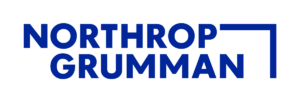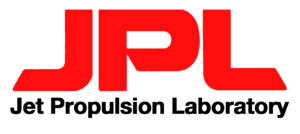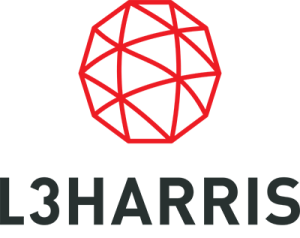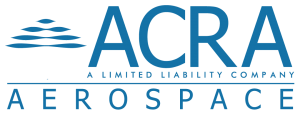9 Effective Onboarding Strategies for Executive Hires: Setting Them Up for Success

Onboarding executive hires plays a pivotal role in ensuring the smooth transition of these vital individuals into an organization. The right strategies not only facilitate integration but also set the stage for success. Particularly for sectors as specialized as aerospace and defense, the stakes are even higher, underscoring the need for a meticulously crafted onboarding process.
Comprehensive Pre-Boarding Process
Prior to an executive’s official induction, a critical phase exists where organizations can effectively lay the groundwork for an executive’s successful integration.
Setting Expectations
At this juncture, clarity is paramount. By delineating precise roles and responsibilities, the organization establishes a transparent framework. This proactive approach acts as a safeguard against future ambiguities, ensuring that both the executive and the organization remain aligned in their objectives and paths.
Early Exposure
It’s imperative for any incoming executive to be aligned with the company’s ethos. By acquainting them with the organization’s culture, mission, and values ahead of time, the executive not only gains a clearer picture of the enterprise but also starts their tenure with a clear sense of purpose and direction.
Personalized Onboarding Plan
The uniqueness of each executive, underscored by their individual experiences and skill sets, necessitates a tailored approach to onboarding.
Need for Tailoring
Consider the nuanced requirements of an aerospace executive search. Though adept for many, a standard onboarding process might falter when addressing the intricate demands of a Vice President of Aerospace Engineering.
The technical knowledge, leadership nuances, and sector-specific strategies inherent to such a position necessitate a distinct approach. By customizing the onboarding experience, organizations can reflect both the legacy and the aspirations of roles pivotal in the aerospace domain, ensuring an induction process that is aligned, relevant, and effective.
Crafting the Roadmap
Central to this endeavor is a dual focus: an in-depth exploration of the executive’s professional trajectory and a meticulous assessment of the organization’s immediate and strategic goals. From this confluence, a detailed and intentional onboarding plan takes shape, ready to adeptly steer the executive through the initial stages of their tenure.
Assign an Executive Mentor
The role of a mentor, particularly one with extensive experience in specialized sectors, is instrumental in facilitating an executive’s transition.
Cultural Assimilation
Company cultures often have subtleties that aren’t immediately apparent. Mentors, with their vast experience, serve as invaluable guides, elucidating these finer points. Their insights ensure that the new executive can swiftly and effectively integrate into the company’s cultural fabric.
Fast-tracking Decisions
Decision-making in a new environment can be daunting. Here, a mentor’s role is pivotal. Their wealth of experience, combined with their understanding of the organization’s dynamics, enables them to offer advice to expedite decision-making processes, ensuring that the executive navigates their new role confidently and effectively.
Focused Leadership Training
Leading in specialized sectors like aerospace or defense requires a deep understanding of their challenges and evolving landscapes.
Tailored Training
In aerospace, executives grapple with integrating cutting-edge technologies, complying with global safety standards, and fostering international partnerships. A tailored training, leveraging up-to-date industry insights, equips them to address these nuances effectively.
Similarly, defense executives navigate geopolitical shifts, new warfare methodologies, and treaty implications. Specialized training prepares them to respond adeptly to such complexities.
Understanding Organizational Context
For an executive in a role like Director of Strategic Partnerships in aerospace, it’s more than brokering agreements. They must discern how collaborations impact the entire value chain, from R&D to long-term company objectives. This holistic perspective ensures alignment with the broader organizational goals.
In-depth Stakeholder Meetings
When considering the specificities of a defense executive search, one recognizes the elevated stakes and inherent complexities. Identifying a seasoned defense executive, perhaps someone suited for a Director of Defense Strategies role, warrants a meticulous approach. In such a context, rigorous stakeholder interactions become indispensable.
Early Interactions
Orchestrating meetings with pivotal stakeholders provides the executive with a nuanced understanding of expectations, historical challenges faced, and the collective vision for the future. Given the multifaceted nature of defense operations, these dialogues become a repository of invaluable insights.
Building Rapport
These initial engagements lay the foundation for cultivating robust, synergistic relationships within the organization, essential in sectors as critical as defense.
Strategic Alignment Sessions
Ensuring that executives are on the same page as the company’s vision and goals drives the organization forward cohesively.
Understanding Company Direction
Through in-depth workshops, leaders can gain insights into market demands, potential challenges, and areas of investment. Equipped with this knowledge, they can lead their teams to develop products or strategies that align with this new trajectory. For example, if a defense company has a long-term strategy of diversifying into cybersecurity solutions, then the executive needs to be apprised of this direction.
Fostering Alignment
As markets shift and new challenges arise, it’s not uncommon for strategies to deviate from the company’s primary objectives. Through regular review sessions via bi-monthly strategy meetings, the executive can receive feedback, understand areas of improvement, and make necessary course corrections. This iterative process ensures that the executive’s strategies align with the company’s evolving goals.
Feedback and Adjustment Periods
The effectiveness of executive onboarding hinges significantly on regular feedback and necessary adjustments.
Ongoing Feedback
To ensure the new executive’s seamless integration into the company, it’s vital to promote a transparent communication channel. This not only allows them to voice their perspectives and potential bottlenecks but also enhances their comfort and trust in the process.
Real-time Adjustments
Any feedback obtained should not just remain on paper; it should be executed promptly. Altering the onboarding steps based on the executive’s feedback ensures the process remains responsive and robust, optimizing the transition phase for the individual and the company.
Role-specific Training and Development
Every executive position has its distinctive challenges and requirements. Tailored training and tools are crucial to empower an executive to surmount these challenges and excel in their role.
Skills Training
For an executive for a private equity firm, the training is tailored to provide insights into deal structuring, market analysis, portfolio management, and grasping shifts in the financial landscape. The nature of private equity is distinct from many other sectors, necessitating an in-depth understanding of both immediate market fluctuations and overarching investment strategies.
Catered Tools
Whether it’s proprietary software for an aerospace executive to simulate flight dynamics or analytical tools for a private equity executive to assess market risks and opportunities, providing role-specific resources ensures that decisions made are both timely and data-driven.
Continuous Support and Resources
The journey of integrating an executive into the fabric of the company doesn’t conclude once the initial onboarding ends — it’s an ongoing commitment.
Post-onboarding Support
As the business landscape evolves, so should the executive’s knowledge and strategies. Whether through structured meetings, workshops, or mentor-guided feedback sessions, regular interactions ensure that the executive remains aligned with the company’s evolving objectives.
Ongoing Resources
Keeping an executive updated is non-negotiable. Providing them with the latest industry analyses, data-driven reports, or even opportunities for advanced training ensures they continue to lead from a position of informed strength.
In the world of executive hires, onboarding is the bridge between potential and performance. Specialized sectors require an even more nuanced approach, emphasizing the need for strategy, alignment, and continuous development. As the business landscape undergoes constant evolution, so should our strategies for integrating top executive talent. If you’re looking to redefine your executive onboarding journey, contact BOB Search.

























